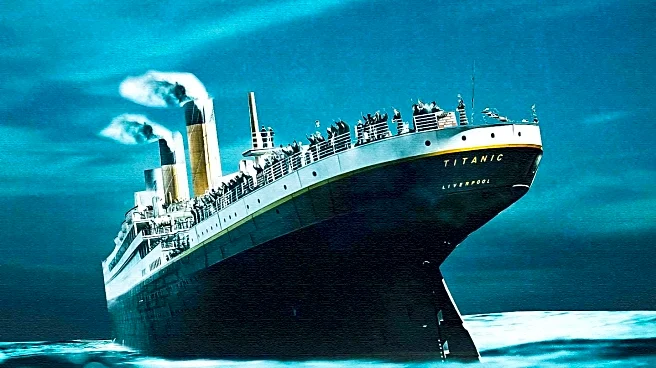What's Happening?
A letter written by Ernest Tomlin, a 21-year-old third-class passenger aboard the Titanic, is set to be auctioned for $66,000. Tomlin penned the letter to his family shortly after boarding the Titanic in Southampton, England, on April 10, 1912. The letter,
sent from Queenstown, Ireland, the ship's last port of call, reveals Tomlin's heartbreak over a woman named Rose. Tragically, Tomlin was among the 1,500 passengers who perished when the Titanic sank on April 15, 1912. His body was recovered with a water-stained diary in his pocket, containing the final entry 'Titanic.' The letter and diary are being sold by Henry Aldridge & Son, marking one of the most complete Titanic archives to come to market in 30 years.
Why It's Important?
The auction of Ernest Tomlin's letter and diary offers a poignant glimpse into the personal stories of Titanic passengers, highlighting the human aspect of the historic tragedy. The items provide a tangible connection to the past, enriching the narrative of the Titanic beyond its infamous sinking. For collectors and historians, such artifacts are invaluable, offering insights into the lives and emotions of those aboard the ill-fated ship. The auction underscores the enduring fascination with the Titanic and its passengers, reflecting a broader interest in historical preservation and storytelling.
What's Next?
The auction, scheduled for November 22, 2025, is expected to attract significant interest from collectors and historians. As the sale approaches, there may be increased media coverage and public interest in the Titanic's history and its passengers. The auction house, Henry Aldridge & Son, may continue to offer similar historical artifacts, contributing to the ongoing preservation and exploration of Titanic-related memorabilia. The sale could also inspire further research into the lives of lesser-known passengers like Ernest Tomlin.
Beyond the Headlines
The auction of Tomlin's letter and diary raises questions about the ethical considerations of selling personal artifacts from tragic events. It prompts reflection on how such items are valued and the narratives they construct about historical events. The sale also highlights the cultural impact of the Titanic, as stories like Tomlin's continue to resonate with audiences, shaping perceptions of the past. This event may encourage discussions on the preservation of historical artifacts and the responsibilities of collectors and auction houses in handling sensitive materials.















